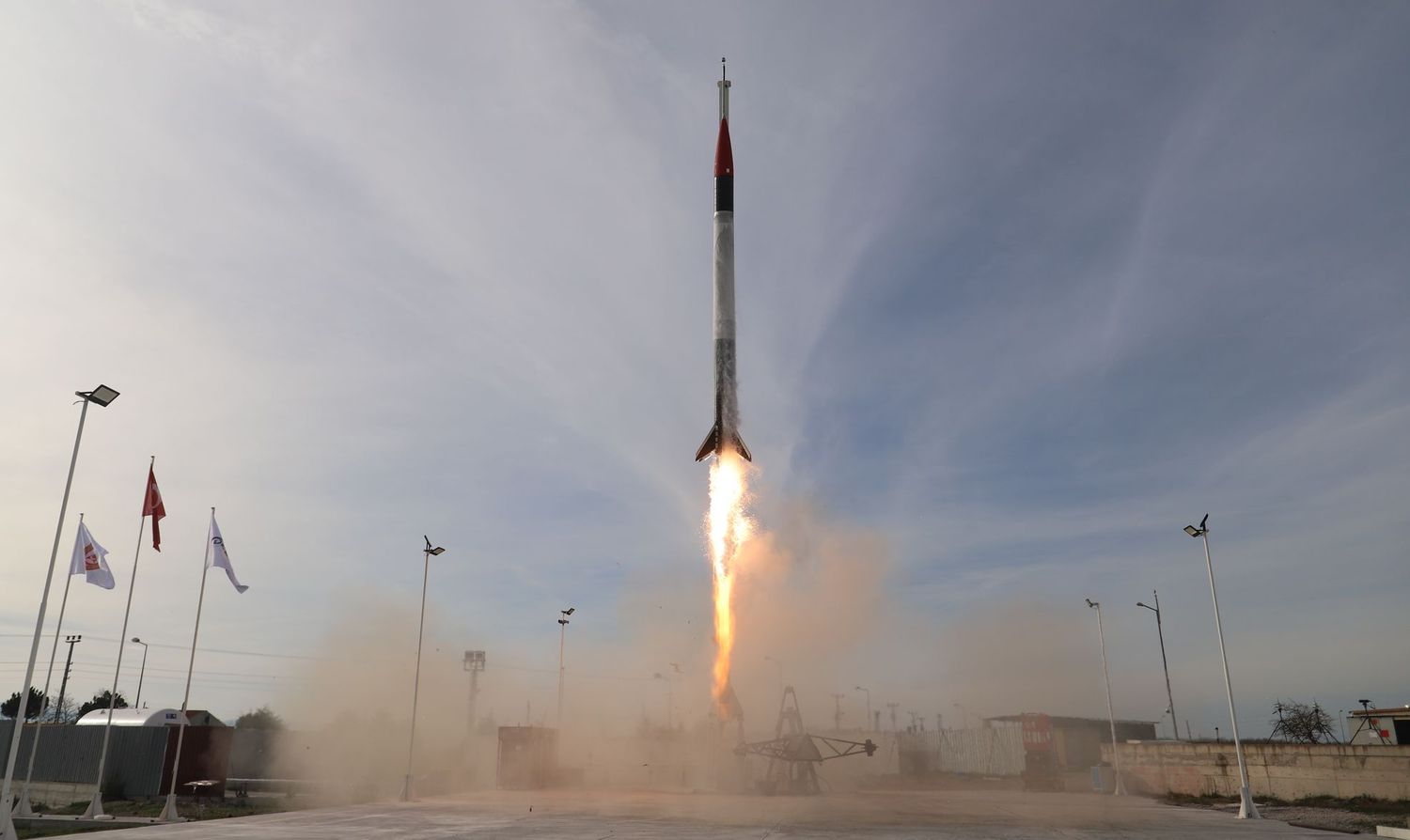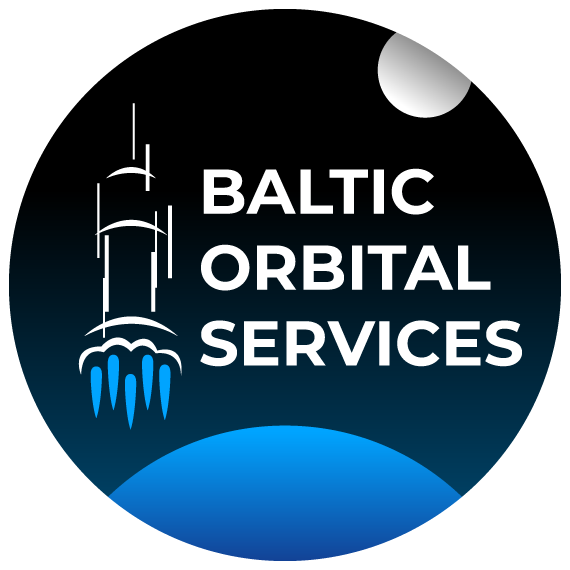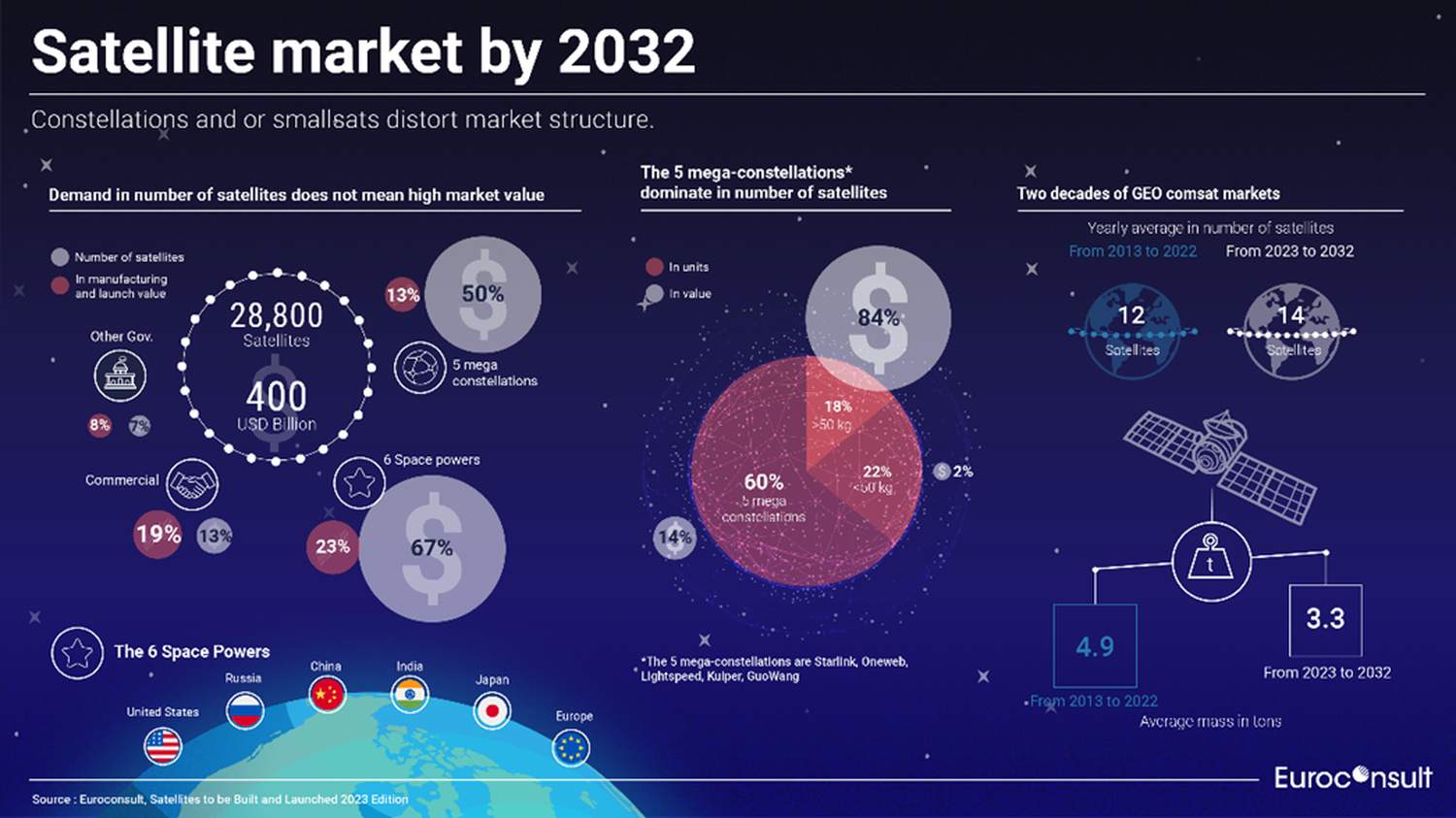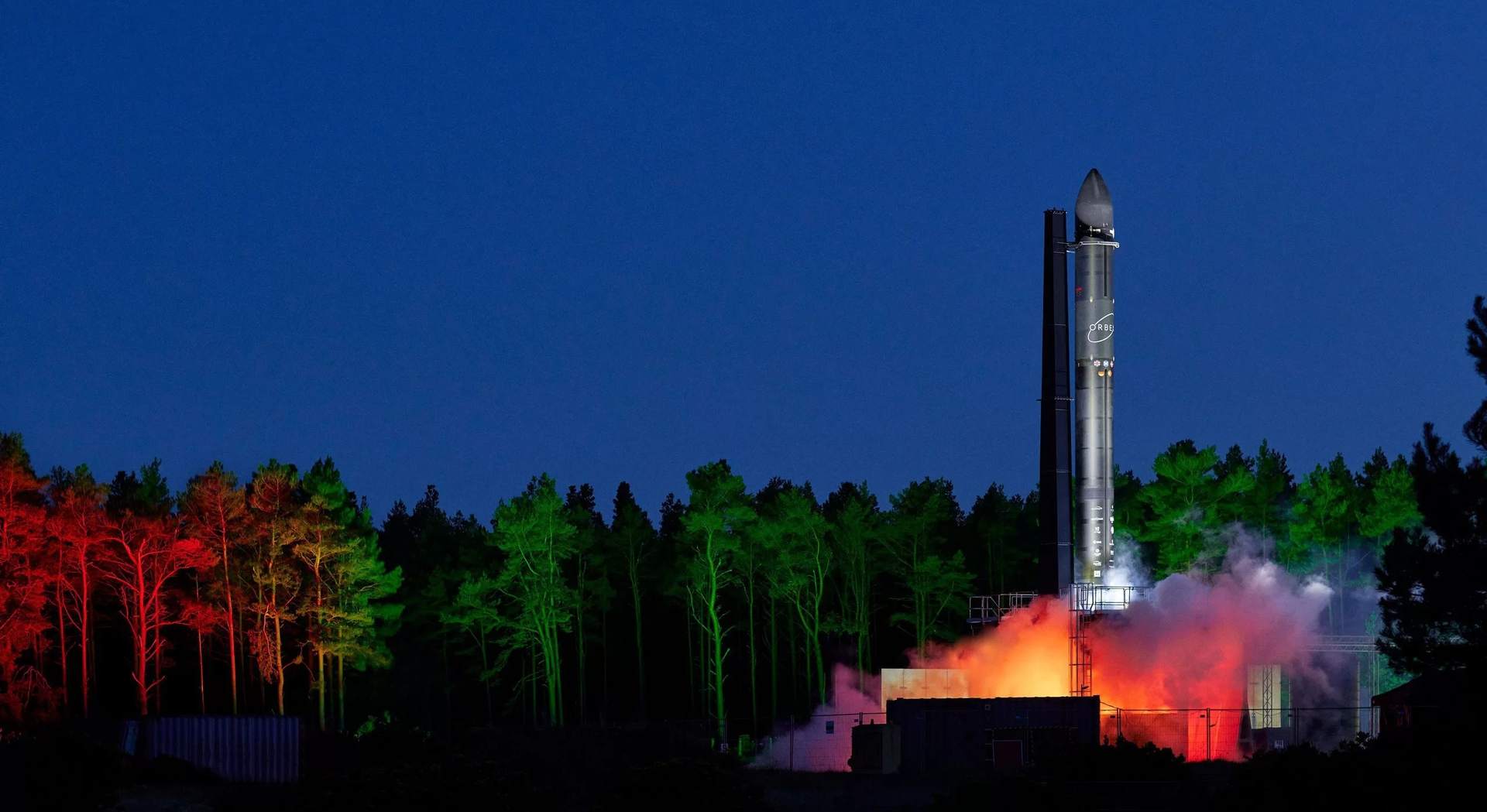
First Hybrid Rocket Launched into Space from Turkey
The Sonde Rocket System (SORS), developed by DeltaV Space Technologies, surpassed 100 km altitude on the 100th anniversary of the Republic, marking the first time in the world that a hybrid rocket using paraffin and liquid oxygen pair went into space. The first launch of SORS, one of the world’s most capable and largest probe rockets, was carried out in December 2020 and has been successfully launched 17 times so far. The Hybrid Propulsion System (HIS), developed within the scope of the Turkish Space Agency (TUA) Lunar Research Program Project (AYAP), was fired as the second stage in the payload section of SORS at an altitude of 100 km. Stating that the first hybrid rocket system firing in space has been carried out, DeltaV Space Technologies General Manager and Koç University Faculty Member Assoc. Dr. Arif Karabeyoğlu gave information on the subject.
We fired a hybrid rocket engine in space for the first time in the world
Probe Rocket System (SORS), developed by DeltaV Space Technologies, a 100 percent subsidiary of Defense Industry Technologies (SSTEK), established by the Presidency of the Republic of Turkey, Presidency of Defense Industries, is the first hybrid rocket in the world to exceed 100 km altitude using paraffin/liquid oxygen pair, on the 100th anniversary of the Republic. has happened. Assoc. Prof. said that the Hybrid Propulsion System (HIS), developed within the scope of the Lunar Research Program Project (AYAP), was fired as the second stage in the payload section of SORS at an altitude of 100 km, making it the first hybrid rocket system ignition in space. Dr. Arif Karabeyoğlu said, “Probe rockets go to space and come back, that is, they do not stay in space. This is the difference between probe rockets and rockets that launch into orbit, so they can be produced in a smaller size. Staying in orbit is a very difficult and costly process. We developed SORS as the main outcome of our Hybrid Space Rocket Engine Development (HURM) Project. We have been successfully launching launches for about 2.5 years. 17 of them have been launched so far. For example, we tested the space engine in space with a probe rocket, which we will use in the Lunar Research Program (AYAP), which is carried out with the Turkish Space Agency and is one of the goals of the Turkish National Space Program. We reached the space environment by exceeding 100 km with the SORS Probe Rocket. We carried out the first firing of the space engine HİS in space. More of this is coming, we have another launch in a few weeks. We are constantly improving and gaining experience. This is a project of the Turkish Space Agency and we are working with them. It was very gratifying that this coincided with 2023. We are proud to have a beautiful launch in its 100th year. Beyond reaching an altitude of 100 km, the system we have installed is a rocket engine that we will operate in space and use in the Lunar Research Program Project (AYAP). We carried its version, which has exactly the same internal ballistics, into space with our probe rocket. We carried out an ignition here. “Thus, it was the first time in the world that a hybrid rocket engine was fired in space,” he said.
We can go to much higher altitudes in places where geographical conditions are suitable, such as Scotland.
Assoc. Prof. said that probe rockets are safe and cost-effective. Dr. Karabeyoğlu continued his words as follows: “The biggest advantage of the probe rocket is the cost; The reason for this is that we use hybrid rockets… Another important advantage is that they are safe. For example, we can produce these rockets in Teknopark Istanbul. We can produce it in our factory in Kurtköy. The advantage of being able to do these jobs in such a small industrial area provides great benefits in terms of cost. Therefore, the cost advantage resulting from the reliability and simplicity of hybrid rockets increases the competitiveness of probe rockets all over the world. Many countries in the world are interested in probe rockets. They want to use it and throw it out of their own country. Due to Turkey’s geographical location, it is difficult to launch rockets that will reach very high altitudes… The safe area around is limited, for example, the Black Sea is too small for large rockets, the Mediterranean is a region with very dense sea and air traffic, so it is difficult to launch rockets there… It is difficult to launch rockets there by putting in less fuel and ramping. We have to launch it by keeping the angle low, reducing the performance of the rocket. We can extend systems that normally have a range of up to 150-200 km to 110-120 km. In summary, there is a need to go to larger areas in order to throw more efficiently. The islets in the west of Scotland are very suitable for launching, the islets are completely in front of the Atlantic Ocean, and they are also safe because the population on the islands is very low.
Probe rockets have many advantages
Assoc. Prof. stated that probe rockets provide the opportunity to perform various tests in space. Dr. Karabeyoğlu said: “The world uses probe rockets to have 10 minutes of gravity-free time in space. A lot of experiments can be done in these 10 minutes. Apart from this, since we are in a space environment, tests of systems such as the communication system to be used in space can be carried out. Since the speeds entered into the atmosphere during return are at hypersonic level, tests in the hypersonic area can be carried out here as well. Since hypersonic wind tunnels are very expensive all over the world, this process is carried out with probe rocket type launch systems. Therefore, it also offers such a testing platform. Beyond this, it is also important for testing air and ballistic defense systems. So it will be possible to use it in NATO exercises as well. NATO has some exercises and training. The rockets they launch in these trainings are quite expensive, so such a system could pave the way for them in a cost-effective manner. “We can say that our priority is to further develop this technology, make it more competitive in the world, and perhaps enable it to be used as a stage in launch systems in the future.”
Our goal is to have a say in space by developing cost-effective technologies.
Assoc. Prof. General Manager of DeltaVUzay Technologies, which is also a member of SAHA Istanbul. Dr. Karabeyoğlu concluded his words as follows: “After SpaceX got into this business, launching into space has become extremely cost-effective. They reduced costs by 3-4 times. Therefore, it is really difficult to compete with SpaceX in the world right now, but the area in which we can compete is; To be able to move in space because SpaceX launches these satellites into space, but they need to be distributed in space… We are developing the technology that can enable movement in space at DELTA V. The hybrid rocket technology we use in the lunar engine is actually very suitable for use in space… We want to be one of the few countries in the world as the engine of orbital transfer vehicles. In this regard, one of the aims of Fergani Space Technologies, founded by Selçuk Bayraktar, is to place satellites in near-earth orbit, to provide communication and positioning services using them, and to develop orbital transfer vehicles. To be able to move… In other words, Fergani Space Technologies develops technologies, systems and platforms that will have a say in the world in a cost-effective manner by using DELTA V’s hybrid rocket technology. This situation may put our country in a very important place in the world. Maybe the launch processes are still under the monopoly of a company like SpaceX all over the world, but the part of moving in space is still empty… Many companies and countries are trying this job, but the systems they make are both small and not cost-effective… Therefore, this technology we use at Fergani Space Technologies has a great advantage. there is. “We want to use this advantage and have a say by going into space in the near future and demonstrating this technologically.”



